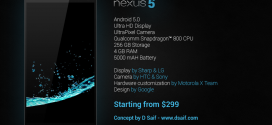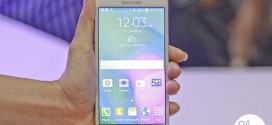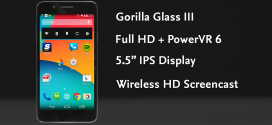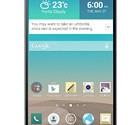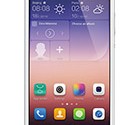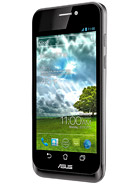 Today we’ll be taking a look at the Asus Padphone. I’ve been meaning to review this phone for a while now, but never actually had the time to do it. The information you’ll find here about the phone may or may not be 100% accurate. These are just the official preliminary specifications, however not much will change when the real ones will be announced. Well, without wasting any time, let us commence this little review of the Asus Padphone – the one phone which can be synced with a tablet.
Today we’ll be taking a look at the Asus Padphone. I’ve been meaning to review this phone for a while now, but never actually had the time to do it. The information you’ll find here about the phone may or may not be 100% accurate. These are just the official preliminary specifications, however not much will change when the real ones will be announced. Well, without wasting any time, let us commence this little review of the Asus Padphone – the one phone which can be synced with a tablet.
GENERAL
Starting off, we’ll review some of the more general features of the Asus Padphone. Here you can find out a bit of info about the supported networks and the announcement and release dates. The Asus Padphone supports both 2G and 3G networks, however, it is uncertain about the 3G networks as not so much information was released of this phone. The 2G networks of the Asus Padphone are : GSM 850 / 900 / 1800 / 1900. The Asus Padphone also has 3G networks, as previously mentioned, however we only know that they are HSDPA. The Asus Padphone was announced somewhere in February 2012. This phone was expected to come out somewhere around April 2012. It may or may not be available in certain countries, but until it is not available World-Wide, i’d classify it as a “coming soon” device. But enough about the generals, let us move on to the next part.
BODY
Next up we have the review of the aspect of the Asus Padphone. Here you can find out a thing or two about the size and weight of the Asus Padphone, as well as whether or not this device has any distinguishable marks. Now the Asus Padphone is unique, as I’ve already mentioned. Its special point is that it has an Optional Padfone Station with a 10.1 inch display. That’s something you don’t actually see everyday and not many phones have this feature. I can’t see too much point in it, aside from turning your phone into a tablet, but then again, what do I know ? Coming back to the matter at hand. The size and weight of the device. The Asus Padphone is around 128 x 65.4 x 9.2 mm big. All and all it’s pretty petite and quite thin. It also doesn’t weigh that much, having a small weight of around 129 grams. Enough about the aspect, because looks aren’t everything.
DISPLAY
Here we have the review of the display of the Asus Padfone. Here you can find out a thing or two about the type of screen of the Asus Padfone, the screen size, the screen’s resolution and pixel density, as well as whether or not the Asus Padfone has any means of protection or any enhancements done to the screen to make your experience that much more pleasant. The Asus Padfone has a Super AMOLED capacitive touchscreen on it. This screen has 16 million colors and is around 4.3 inches big. The Asus Padfone’s screen can house a resolution of approximately 540 x 960 pixels. The pixel density of the Asus Padfone is around 256 ppi, which I’d say is quite a lot. I’d say that it’s not that big of a difference with the pixel density to the human eye. My opinion is that once it surpasses 250 ppi it sort of looks the same. However, certain “experts” claim that the human eye can perceive up to 300 ppi, and then and only then, will it have reached its maximum. The Asus Padfone also has multitouch, however, it is not the advanced kind of multitouch. The Asus Padfone has no protection to the screen whatsoever and it also has no enhancements at all. Let us move on now, to the next part and beyond.
SOUND
Next up there is the audio output capability of the Asus Padfone. Here you can find out a bit of info about the alert types, the speaker and audio jack as well as whether or not the Asus Padfone has any software based sound enhancement installed on it. One may say that the audio of the Asus Padfone is quite basic since it has everything a normal Android phone would have. The alert types are : Vibration and MP3 ringtones and the Asus Padfone has both a Loudspeaker and a 3.5 mm audio jack. No enhancements whatsoever can be found on the Asus Padfone. That’s enough about the audio of the Asus Padfone, so let us move on.
MEMORY
Next up we have the review of the memory of the Asus Padfone. Here you can find out a bit about the internal storage space and ways of enhancing it as well as info about the RAM memory. The Asus Padfone has around 1 GB of RAM, which is quite good considering that’s the current maximum for mobile devices. The Asus Padfone comes in two different versions : a 16 GB one and a 32 GB one. If none of those is enough to fit your needs, know that the Asus Padfone also has a Micro SD card slot which can use anything up to 32 GB. That’s enough about the memory of the Asus Padfone, let us move on now.
DATA CONNECTION
Next up we have the data connectivity review of the Asus Padfone. Here you can find out a bit of info about the GPRS and EDGE of the device, the Speed and WLAN as well as the Bluetooth and USB conenctions of the Asus Padfone. This phone has both GPRS and EDGE, however it isn’t mentioned what Class those two are and at what speed they can function. The Asus Padfone has both HDSPA and HSUPA speed, however, again it isn’t mentioned what speed in MB/s it can reach. We know for sure that the HSUPA speed doesn’t exceed 5.76 MB/s, but I can’t say anything about the HSDPA one. The WLAN of the Asus Padfone is a Wi-Fi 802.11 b/g/n with Wi-Fi hotspot. The Asus Padfone also has Bluetooth, however I can’t say at this time what version it is. What I do know is that the Bluetooth has A2DP on it. The Asus Padfone’s USB connectivity can be done via its Micro USB v2.0 port. That’s enough about the data connectivity in my opinion, so let us move on.
CAMERA
Next we have the camera’s side of the review. Here we can find out a bit of info about the main and secondary cameras, as well as their features and capabilities. The main camera of the Asus Padfone is an 8 MP one. This camera can photograph at resolutions as big as 3264 x 2448 pixels. The Asus Padfone’s main camera has the following features : autofocus, LED flash and Geo-Tagging. This camera can also record video, however, no mention has been made about the quality. We know for sure that an 8 MP camera can record at around 1080p with a maximum of 30 frames per second. However, that’s just a wild guess since the official ones haven’t really been made clear. If it will be able to record in high quality, it won’t exceed the one mentioned before. The Asus Padfone also has a secondary VGA frontal camera. Enough about the camera, so let us move on.
BATTERY LIFE
Next up we have the battery life review of the Asus Padfone. Here you can find out a bit of info about the Asus Padfone’s battery type and how long it can function under which circumstances. The Asus Padfone has a Standard Li-Ion 1520 mAh. The Asus Padfone’s battery can run for approximately 373 hours in 2G stand-by mode and 440 hours in 3G stand-by mode. The Asus Padfone can only function for up to 10 hours and 40 minutes of talk time in 2G and 8 hours and 30 minutes in 3G. Enough of the battery and let’s move on since it isn’t much to go on.
HARDWARE
Next up we have the review of the hardware of the Asus Padfone. Here you can find a bit of information about the three major hardware components : processor, motherboard and GPU. The Asus Padfone’s processor is a Dual-Core 1.5 GHz Krait processor. The Asus Padfone also has a Qualcomm Snapdragon S4 chipset and an Adreno 225 GPU. All and all, this is a very powerful hardware configuration. But enough about it, let us move on since we still have some things to cover.
SOFTWARE
Next up we have the OS review of the Asus Padfone. Here we can find out a bit about the operating system of the Asus Padfone and whether or not it can be upgraded. The Asus Padfone is known to come out with the Android OS v4.0 Ice Cream Sandwich installed on it. I’m not sure it’s worth mentioning whether or not it can be upgraded since it already is at a very good version – the best version available. Since there really isn’t much more to be said here, let us move on.
FEATURES
Here we will see some of the more random features and capabilities of the Asus Padfone. The sensors of the Asus Padfone are : Accelerometer, Proximity and Compass. The messaging on the Asus Padfone can be done via : SMS ( with threaded view ), MMS, E-Mail, Push Mail and IM. The browser of the Asus Padfone uses HTML5 and has integrated support for Adobe Flash. The radio of the Asus Padfone is non-existent, however I’ve said on way too many occasions how that can be fixed. The Asus Padfone has a GPS with A-GPS support and Java via Java MIDP emulation. The only color available for the Asus Padfone is Black.
Here is a brief list of what the Asus Padfone can do :
- SNS integration
- MP3/WAV/eAAC+ player
- MP4/H.264/H.263 player
- Organizer
- Document viewer
- Photo viewer/editor
- Voice memo/dial
- Predictive text input (Swype)
This concludes our little review of the Asus Padfone. If you feel that anything is lacking from this review feel free to leave your suggestions in the comment section below for things which should be added and I will be sure to take them into consideration when writing my future projects. In the meantime, I sincerely hope you had as much fun reading my little review as I had writing it.





